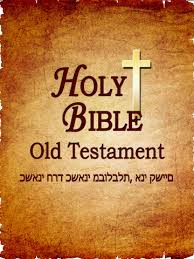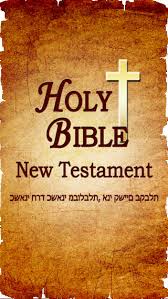One of the most important things to understand about the Bible is that the Old and New Testaments are inseparably linked. The Old Testament is the New Testament concealed, the New Testament is the Old Testament revealed. The books of the New Testament are the only ones that connect to the stories, teachings, covenants and prophecies of the Old. But, does that make them historically reliable?
In making a case for Jesus skeptics often claim that we cannot know who Jesus was, the critical question usually comes in the form of something like: “How do we know that the New Testament documents are reliable and have been transmitted accurately over time?”
We can put the reliability and truth of the Bible up against a courtroom test, like lawyers do. By weighing the evidence many unbelievers and skeptics have become Christians, and there is a lot of evidence to weigh!
There are three main categories of evidence that the Bible bears out, and within them there are five specific areas we can study. We will use the acronym MAPS-S for these five areas:
Category I: External evidence
1. Manuscripts:
The Bible meets and exceeds all historical and literary requirements for excellence based on scholarly academic standards.
Getting to know the big picture of the Bible is important: The Bible has 66 books by 40 authors from all walks of life living in 10 different countries written over a period of 1500 years from various places and various occupations with a cast of 2,930 characters—YET, it has a seamless story that flows through both its Old and New Testament.
The Bible is considered by scholars to be a literary masterpiece, no other book of antiquity has the following attributes:
- A multitude of copying rules and guidelines, along with a reverent fear of God in what they were doing, has allowed Scribes to reliably pass down the Word of God over the centuries up until the time of the printing press.
- There are massive numbers of early New Testament manuscripts and documents in which to compare—25,000 plus in various languages, and nearly 6,000 in the original Greek; these can be viewed in various museums and houses of academia throughout the world.
- With the massive amounts of early documents in which to compare scholars in textual criticism give the New Testament 99.5% confidence of transmission from the original text.
- The New Testament is a collection of witness documents and are considered primary, versus secondary, sources because they were written in the same century that the events occurred.
- Events, people and place in the Bible have been corroborated by outside sources and the Bible has been used by historians and archeologists to uncover artifacts and evidence from antiquity.
One of the main accusations by skeptics is that the Bible has thousands of errors in the various manuscripts.Watch J. Warner Wallace give an insightful answer that discredits those accusations in about three minutes:
What about those other so-called gospels, why are then omitted from the Bible?
Turn on the Discovery channel, National Geographic or the History Channel and you will probably find a series that tries to debunk the person of Jesus and the validity of the New Testament Gospels. Their skepticism comes mainly in the form of this statement: There are so many other gospel accounts that were written, how do we know that the ones in the New Testament are the only ones that are correct?
Short answer: Because they were the only ones accepted and used by the early Christians. The four New Testament Gospels were the only ones written in the first century and the only ones that contain eyewitness accounts. The New Testament Gospels are the only ones that give an account of a first century Palestinian Jew and not an esoteric mythical figure like the ones we find in the gnostic writings.
What are Gnostic gospels:
Gnosis = knowledge
Gnosticism = “The thought and practice of various cults in early Christianity distinguished by the conviction that matter is evil and that emancipation comes through gnosis.”
- Gnostics held a belief that one could gain ‘secret knowledge’ of God.
- Gnostics held conflicting beliefs such as, Jesus wasn’t human but only spirit, and some believed that He was only human and not spirit.
- The Gnostic heretic Marcion, about 140 AD, was the first to promote Gnostic writings and tried to exclude all accounts by Jewish authors, however by doing that he actually confirmed the New Testament accounts as the ones being used by the earliest Christians.
- Gnostic writings and so-called gospels were not written until well into the second and third centuries.
- Gnostic ‘gospel’ writers took the names of many of the apostles and disciples but were not themselves eyewitnesses.
- Justin Martyr and other early Christians of the second and third centuries spoke and wrote against these heretical teachings.
Reasons for rejecting Gnostic gospels:
- Gnostic writings contain absurdities and inconsistencies with early writings of the Apostles and disciples of Jesus.
- Gnostic writings have no basis in primary evidence, cross-references to other Scripture, or confirmation from the first and second century Church, and were written well into the second century AD and on as alternatives to the Jewish writings.
- They falsely claim to be written by the apostles or their associates who were long dead.
- They contain false doctrine concerning Christianity and Jesus (Gnosticism, Ascetisicm, Docetism, Modalism, Adoptionism, etc.).
- They contain false miracle claims about Jesus’ infancy (cf. Jn. 2:11).
- They contain false or exaggerated claims about Biblical events.
- The Church Fathers (early Christian leaders) unanimously rejected them.
- The New Testament authors and Jesus himself explicitly warned of false teachers and teachings.
Note: The books of our Christian Bible today are the same ones used by the early disciples and followers of Christ, therefore any other book would not be part of Christianity anyway.
Here’s an example of how historically accurate the New Testament Gospels are:
Luke, the author of the Gospel of Luke and the book of Acts, is said to be one of the greatest historians to ever write. His historical accounts have always been confirmed and the details he gives allow both Biblical and non-Biblical scholars and archeologists to uncover historical truths and artifacts based on his records. For example…
In the fifteenth year of the reign of Tiberius Caesar—when Pontius Pilate was governor of Judea, Herod tetrarch of Galilee, his brother Philip, tetrarch of Iturea and Traconitis, and Lysanias tetrarch of Abilene—during the high-priesthood of Annas and Caiaphas, the word of God came to John son of Zechariah in the wilderness. He went into all the country around the Jordan, preaching a baptism of repentance for the forgiveness of sins. As it is written in the book of the words of Isaiah the prophet, “The voice of one crying in the wilderness,
‘Make ready the way of the Lord, Make His paths straight. –Luke 3:1-4
There are over ten people, places and events confirmed outside the Bible in just these four short verses. If Luke is right on these minor details of history then we should trust him on the rest of his accounts. In fact Luke’s accounts through both the Gospel of Luke and the book of Acts have never been disputed and are used by Archeologist still today.
2. Archeology:
There are over 25,000 finds in Archeology, and growing, that support Biblical accounts. No archeological find has ever disproven a Biblical account. Included in these are supporting evidence of people, places and events written about in the Bible that have helped archeologists uncover missing evidence from historical events.
“In extraordinary ways, modern archaeology has affirmed the historical core of the Old and New Testaments—corroborating key portions of the stories of Israel’s patriarchs, the Exodus, the Davidic monarchy, and the life and times of Jesus.”
-Jeffery Sheler, “Is the Bible True,” US News & World Report, October 25, 1999, 52
“The geography of Bible lands and visible remains of antiquity have been gradually recorded until today more than 25,000 sites within this region and dating to Old Testament times, in their broadest sense, have been located…”
Donald J. Wiseman, “Archaeological Confirmation of the Old Testament,” in C.F.H. Henry, Revelation and the Bible, 301-302.
“It may be stated categorically that no archaeological discovery has ever controverted a Biblical reference. Scores of archaeological findings have been made which confirm in clear outline or exact detail historical statements in the Bible. And, by the same token, proper evaluation of Biblical descriptions has often led to amazing discoveries.”
-Dr. Nelson Glueck, Archeologist
Note: Glueck’s pioneering work in Biblical archaeology resulted in the discovery of 1,500 ancient sites.
Examples of people or things that skeptics have said did not happen, or exist, but were later proven with the help of archeological discoveries:
- Herod the Great
- Pontius Pilate
- Pool of Bethesda
- The Pool of Siloam
- The use of crucifixion by the Romans
- Customs and practices of the first century
- The historical Jesus
- Early Christianity
Watch this twelve minutes clip of Dr. Randall Price explaining the importance of archaeology in Biblical authentication:
As the rain and the snow come down from heaven, and do not return to it without watering the earth and making it bud and flourish, so that it yields seed for the sower and bread for the eater, so is my word that goes out from my mouth: It will not return to me empty, but will accomplish what I desire and achieve the purpose for which I sent it. Isaiah 55:10-11
Join us next week as we look the other two categories of evidence in MAPS-S as we continue our Case for Christ!
————————————————————————————————————
You will not find this material in the public school curriculum even though it is based on solid evidence and grounded in research. It is ironic that following the evidence to where it leads stops at the door of our public schools as they will not let a “Divine footprint” in! Join us as we examine evidence for Christianity and learn how to become a thoughtful defender and ambassador of your faith.
Click into the resource page of this website to view many of the top Christian thinkers and apologists along with some of their work; connecting to these types of resources is essential in your Christian growth.
Please let me know what you think: Give feedback, ask questions or send concerns in the comment section of the blog.
Teri Dugan



Excellent as always Teri, have added this to a post I did on you recently. See https://bcooper.wordpress.com/2017/05/15/meet-teri-dugan-christian-apologist/
Looking forward to the following post on this subject. Blessing!